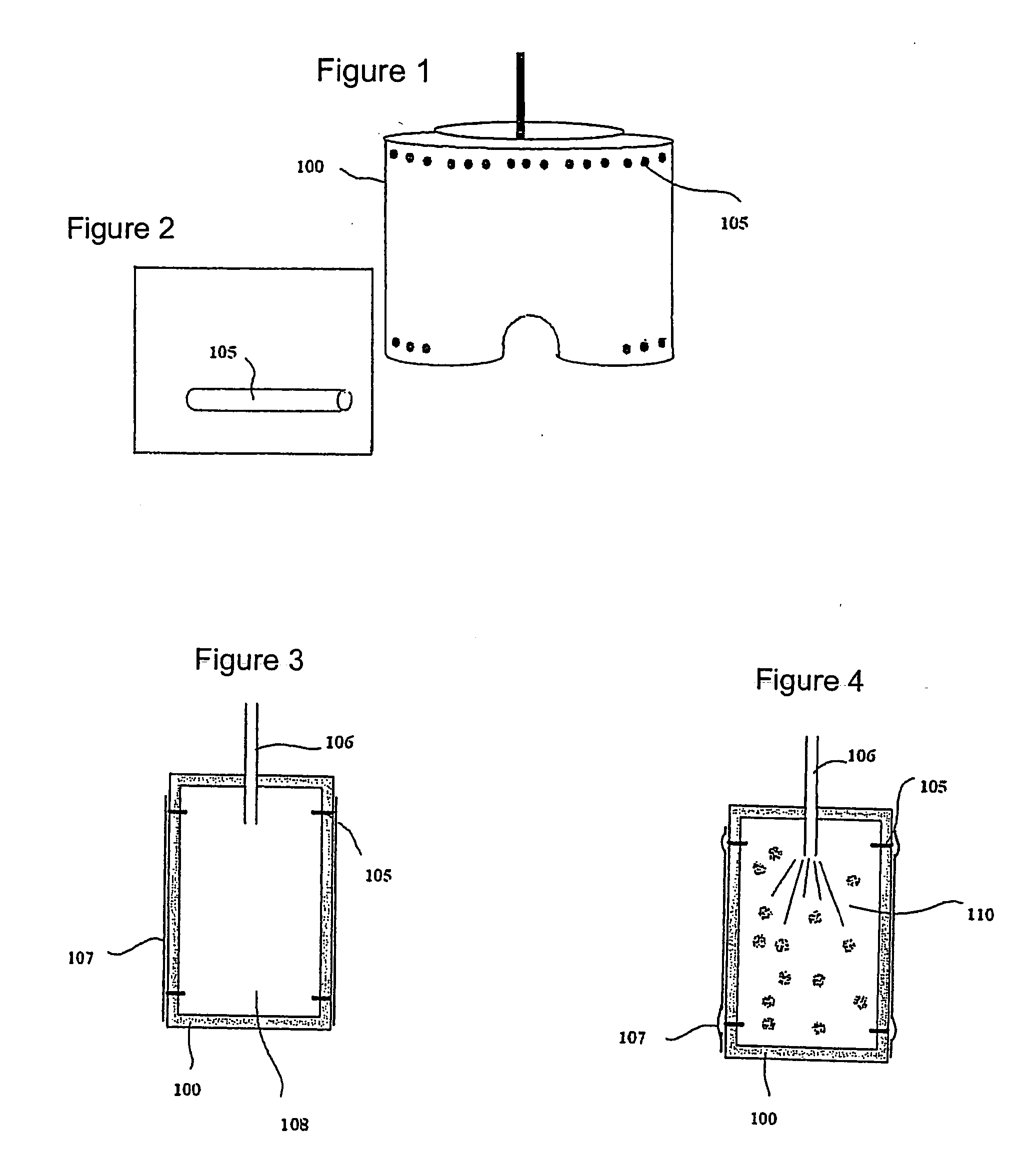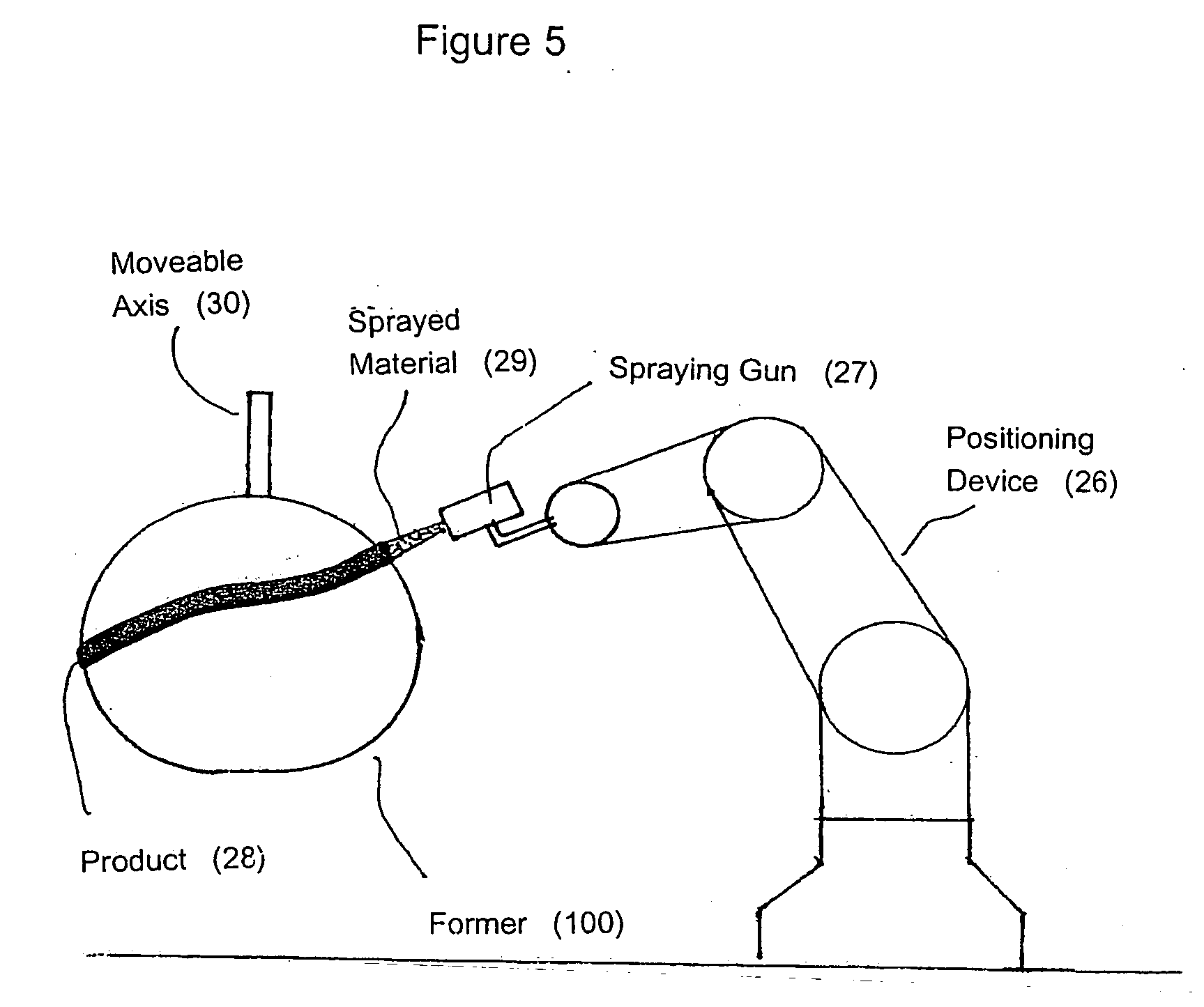Method and apparatus to produce stretchable products
- Summary
- Abstract
- Description
- Claims
- Application Information
AI Technical Summary
Benefits of technology
Problems solved by technology
Method used
Image
Examples
Embodiment Construction
[0030] The present invention is generally related to methods for producing stretchable, elastic or shape-retaining products composed of principal materials comprising resilient elastomers such as natural latex rubber, polyurethane or other synthetic materials, in a spray able liquid state, using a precise controlled spraying of the liquid material onto a surface of a wall such as a workpiece former. The resulting product may have a uniform thickness or different thicknesses at different regions as desired. Different thickness in different regions of a product may be desirable in order to reinforce regions of a product such as leg or waist openings in a garment. The present invention is also directed to methods and apparatus for preparing products having a flocked single or double-sided surface, that is a surface coated with loose fibers, a method and apparatus for generating perforations in such products, and methods for removing products off a workpiece former. The present inventio...
PUM
| Property | Measurement | Unit |
|---|---|---|
| Thickness | aaaaa | aaaaa |
| Pressure | aaaaa | aaaaa |
| Stretchability | aaaaa | aaaaa |
Abstract
Description
Claims
Application Information
 Login to View More
Login to View More - R&D
- Intellectual Property
- Life Sciences
- Materials
- Tech Scout
- Unparalleled Data Quality
- Higher Quality Content
- 60% Fewer Hallucinations
Browse by: Latest US Patents, China's latest patents, Technical Efficacy Thesaurus, Application Domain, Technology Topic, Popular Technical Reports.
© 2025 PatSnap. All rights reserved.Legal|Privacy policy|Modern Slavery Act Transparency Statement|Sitemap|About US| Contact US: help@patsnap.com



